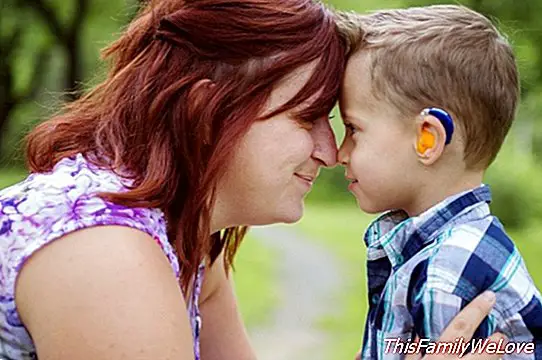Early detection of deafness, how to rule out hearing problems

The good development of children does not only depend on the education they receive. It also requires a good state of all its faculties and in case they appear problems In some capacity of the child, you must know how to act to counteract these conditions. The sooner they are detected, the sooner the best treatment can be started.
Tests like those that detect early the deafness They will help parents choose a better way to ensure an excellent education for their children and ensure that they do not fall behind in their development.
Importance of detecting deafness
In Spain, the cases of children with deafness they are few, only five out of every 1000 minors are born with some serious problem of hearing and only in one in every 1000 This condition is total. However, it is recommended to check if the child may have hearing problems of some kind, especially when there is a family history, drugs are used that increase the risk and in the case of premature babies or babies with little weight.
Detecting a case of deafness in children is very important because hearing is a necessary tool for the development of language and communication in all its aspects. If a child does not hear well, he will present serious difficulties to learn to talk and to be able to maintain a dialogue with other people. This in turn will affect their day to day emotional, social and school level.
Thanks to the different tests of early detection Deafness stimulation programs can be started as early as possible from early ages. Treatments designed to overcome barriers and teach oral communication skills or in other ways so that the development of the child is altered due to these hearing problems.
What kind of tests are done
There are two types of tests for the early detection of deafness in the smallest:
- Otoacoustic emissions. They consist of installing a small probe in the ear canal that emits a series of sounds to collect the response produced in the ear area called the cochlea.
- Auditory potential. The child is given helmets that emit sounds to collect the signals that reach the brain through sensors that are placed on the child's scalp.
Both tests are performed during the First days of life, usually 24 hours after birth and before maternity discharge occurs. If it has not been done before the mother leaves the hospital, it must be done during the first month of the baby. During the test the child should remain calm and asleep in case the discomfort makes him move.
Possible results
In the case that hearing tests are normal, there is no need to worry: the child listens properly at that moment. However later The child will have to be taken to revisions because it is possible that deafness appears in the future, so it will be necessary to monitor possible symptoms, especially if there is a history of these problems in the family.
If the tests yielded abnormal results, the case should be referred to an otolaryngologist for evaluation. Deeper the case and there is a more detailed study on this case. It will be this specialist who makes the definitive diagnosis. The fundamental thing is to know if the child has hearing problems or not before three months to start the necessary treatments to ensure a good development.
If a deafness problem is detected, a treatment known as hearing loss. This process will consist of hearing aids, interventions aimed at correcting physical problems and speech therapy techniques.
Damián Montero
- Learn to concentrate: how to achieve more attention
- Childhood otitis, ear pain




